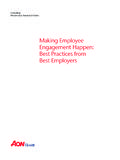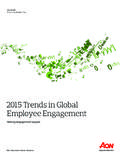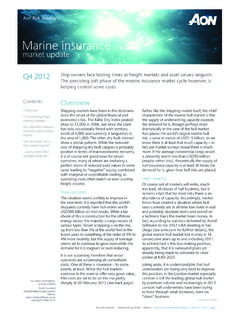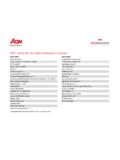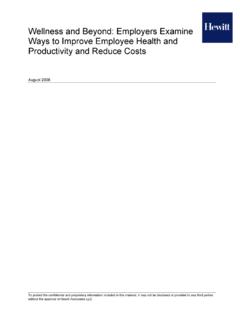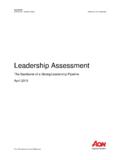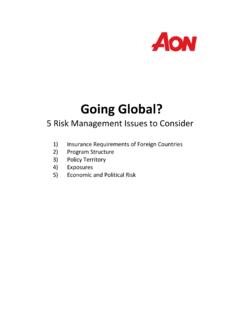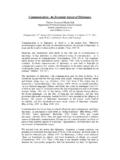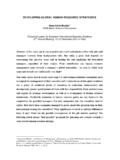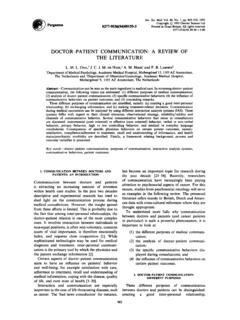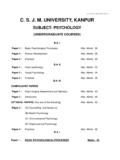Transcription of Survey Findings - Health | Aon
1 Consulting M&A Solutions Culture Integration in M&A. Survey Findings In 2011, Aon Hewitt surveyed 123 organizations from around the globe across various industries to learn more about culture integration during merger and acquisition (M&A) activity. We asked a series of questions to determine how culture was prioritized both pre- and post-close, what methods were used to integrate cultures and how successful organizations were in achieving their objectives. Our analysis revealed that although deal activity is on the rise and cultural integration is cited as a top priority during M&A. activity, most organizations do not have a clearly defined approach to addressing culture. This Survey is the third in our three part series on hot topics in M&A. Survey Findings Deal Activity is on the Rise, it's Global As the economy continues to rebound from the recent global recession, and it's all about Growth M&A activity shows signs of continued growth.
2 M&A activity grew in 2010 from low levels in 2009, and is expected to rise even further. Sixty-nine percent of organizations participating in our study anticipate an increase in M&A activity in the next one to two years and 38% anticipate an increase in joint ventures over the same time period. This compares to 52% of organizations anticipating an increase in M&A activ- ity and 37% anticipating an increase in joint ventures in our 2010 study. This represents a 33% net increase in anticipated M&A activity in one year. Level of Anticipated Transaction Activity The anticipated level of transaction activity in the next one to two years (% of respondents). 80%. 69%. 60% 52%. 40% 37% 38%. 23% 21%. 19% 16%. 20%. 0%. Merger/Acquisition IPO Joint Venture Divestiture 2010 2011. Culture Integration in M&A Global Survey Findings 1. Anticipated M&A Activity.
3 By Country/Region The anticipated geographic focus of M&A activity in the next one to two years (% of respondents). Asia Pacific 73%. Europe 12%. Latin America 5%. North America 11%. 0% 20% 40% 60% 80% 100%. Australia/New Zealand 16%. China 57%. Hong Kong 12%. India 39%. Japan 17%. South Korea 17%. Southeast Asia 26%. Central Europe 26%. Eastern Europe 26%. Western Europe 40%. Central America/Caribbean 12%. Mexico 17%. South America 48%. Canada 36%. United States 72%. Africa 15%. Middle East 22%. 0% 20% 40% 60% 80% 100%. 2 Aon Hewitt cross -Border M&A Trends As deal activity continues to be heavily global, a number of noteworthy trends in cross -border M&A activity are beginning to emerge. One interesting trend is that Asia Pacific firms are increasingly targeting the developed markets of North America and Europe for deals. Our Survey indicates that nearly 50% of Asia Pacific firms are anticipating doing deals in North America and in Europe.
4 Meanwhile, firms in North America and Europe continue to look to emerging market opportunities and are targeting deals in Asia Pacific and South America, among other places. For example, 100% of both the North American and European participants in our Survey indicated that they anticipate doing deals in Asia Pacific in the next two years. The following charts highlight the cross -border M&A trends observed in our Survey . The first chart shows the trends in anticipated deal activity based on the region in which companies are investing (inbound M&A perspective). The second chart shows trends in anticipated deal activity based on the headquarter region of participants (outbound M&A perspective). Deal activity continues to be heavily global in nature. Over 60% of companies in our study anticipate being involved in global deals (deals outside of their headquarter region), with Asia Pacific being the region most targeted for M&A activity, followed by North America and then Europe.
5 Inbound M&A Trends Level of anticipated cross -border deal activity by region in which deals are anticipated to occur (inbound perspective). (% of respondents). 100% 100%. 100% 100%. 100%. 80% 73%. 65% 65% 69%. 60% 55% 53% 53%. 47% 48% 47%. 43% 45%. 40% 33% 33%. 19%. 20% 9%. 0%. Asia Europe Latin America North America Other Regions Companies headquartered in Asia Companies headquartered in Europe Companies headquartered in Latin America Companies headquartered in North America Culture Integration in M&A Global Survey Findings 3. Outbound M&A Trends Level of anticipated deal activity by headquarter region of acquiring company (outbound perspective). (% of respondents). 100% 100% 100% 100%. 100%. 80% 73%. 65% 65% 69%. 60% 53% 53% 55%. 47% 47% 45% 48%. 43%. 40% 33% 33%. 19%. 20%. 9%. 0%. Companies Companies Companies Companies headquartered headquartered headquartered headquartered in Asia in Europe in Latin America in North America Asia Europe Latin America North America Other Regions Focus in M&A Activity Consistent with the emerging theme in our 2010 studies1, M&A activity continues to be increasingly focused on growth rather than cost savings.
6 While firms are keen to realize cost synergies as they engage in deal activity, their focus remains firmly on achieving growth in new geographic markets and in new adjacent products. This focus comes as firms seek to expand on the heels of the global recession. Key Areas of Focus Top two areas of focus in M&A activity over the next two years (% of respondents). 100%. 84%. 79%. 80%. 60% 58% 56%. 38%. 40%. 0%. Focus on Focus on Focus on cost Heightened Focus on growth in new growth in of acquisition due diligence acquisition geographic new/adjacent and possible to identify and retention markets and products and cost synergies liabilities and of leadership revenue growth revenue compliance and growth issues key talent 1. Diagnosing Leadership & Key Talent Practices in M&A (2010) and Total Rewards in M&A (2010). 4 Aon Hewitt Deal Activity is on the Rise but Deal Success While it is clear that deal activity is on the rise, it is not clear that firms are any is Not; Failed Cultural Integration is a Top more successful than they have been in the past at achieving stated transaction Direct and Indirect Contributing Factor objectives.
7 In fact, the rate of deal failure remains alarmingly high. Nearly 50% of companies in our Survey reported that they had failed to achieve stated objectives in past transactions. Additionally, over 50% of organizations lose their key talent at the same or even higher rate than non-critical talent. Companies indicated that a variety of issues contributed to deal failure as illustrated in the chart below. Contributing Factors to Deal Failure Top 10 drivers of deal failure (% of respondents). Integration/implementation took longer than expected 41%. Cultural integration issues 33%. Inconsistent/unclear communication of synergy objectives 32%. Insufficient attention/priority to 30%. workforce/people issues Poor/misinformed strategy 28%. Risks/liabilities not identified during 26%. due diligence Insufficient execution capability/competency 26%.
8 Leadership infighting 22%. and/or buy-in Price paid for target was too high 20%. Failure to implement an appropriate organizational structure 18%. 0% 10% 20% 30% 40% 50%. As the above chart indicates, cultural integration was the second most common direct factor cited for deal failure by companies in our Survey and has increasingly become recognized as a top issue in M&A. But, in addition to being cited directly as a leading cause of deal failure, culture integration is also linked as an underlying, indirect driver to a number of other immediate causes of deal failure, including delayed integration or implementation (the most common factor cited for deal failure). Our Survey confirms that culture is indeed a key underlying force in many of the most vexing challenges experienced in a deal from both a people perspective as well as from an overall business perspective.
9 The chart on the following page highlights the top areas where culture has both a direct and an indirect linkage to deal failure by highlighting the consequences of unsuccessful culture integration. Culture Integration in M&A Global Survey Findings 5. Impact of Culture on Deal Success Consequences of unsuccessful culture integration (% of respondents). Organization distraction & loss of productivity 80%. Loss of key talent 78%. Failure to achieve critical milestones or synergies 77%. Decreased employee engagement 73%. Delayed integration 60%. 0% 20% 40% 60% 80% 100%. As reflected in the chart above, many of the consequences of unsuccessful cultural integration are direct drivers of deal failure. However, despite the clear linkage between culture and deal success, many organizations fail to even track culture and other people-related metrics as part of their overall transaction metrics.
10 Although nearly 80% of respondents in our study track formal measures of deal success, a significantly lower number track culture alignment (44%) as well as some of the other key people-related metrics that the Survey has shown to be directly related to culture alignment. Given the significant influence of culture on deal success, it clearly is a topic that leaders cannot afford to ignore during a deal. 6 Aon Hewitt Measuring Deal Success Key metrics used to measure deal success (% of respondents). Achievement of revenue synergies 94%. Achievement of cost synergies 94%. Achievement of integration plan milestones 84%. Corporate Metrics Speed of integration 68%. Achievement of market share increase 65%. Customer satisfaction 47%. Customer attrition 43%. Change in share price 35%. Increased innovation 25%. Retention of key employees 64%.


